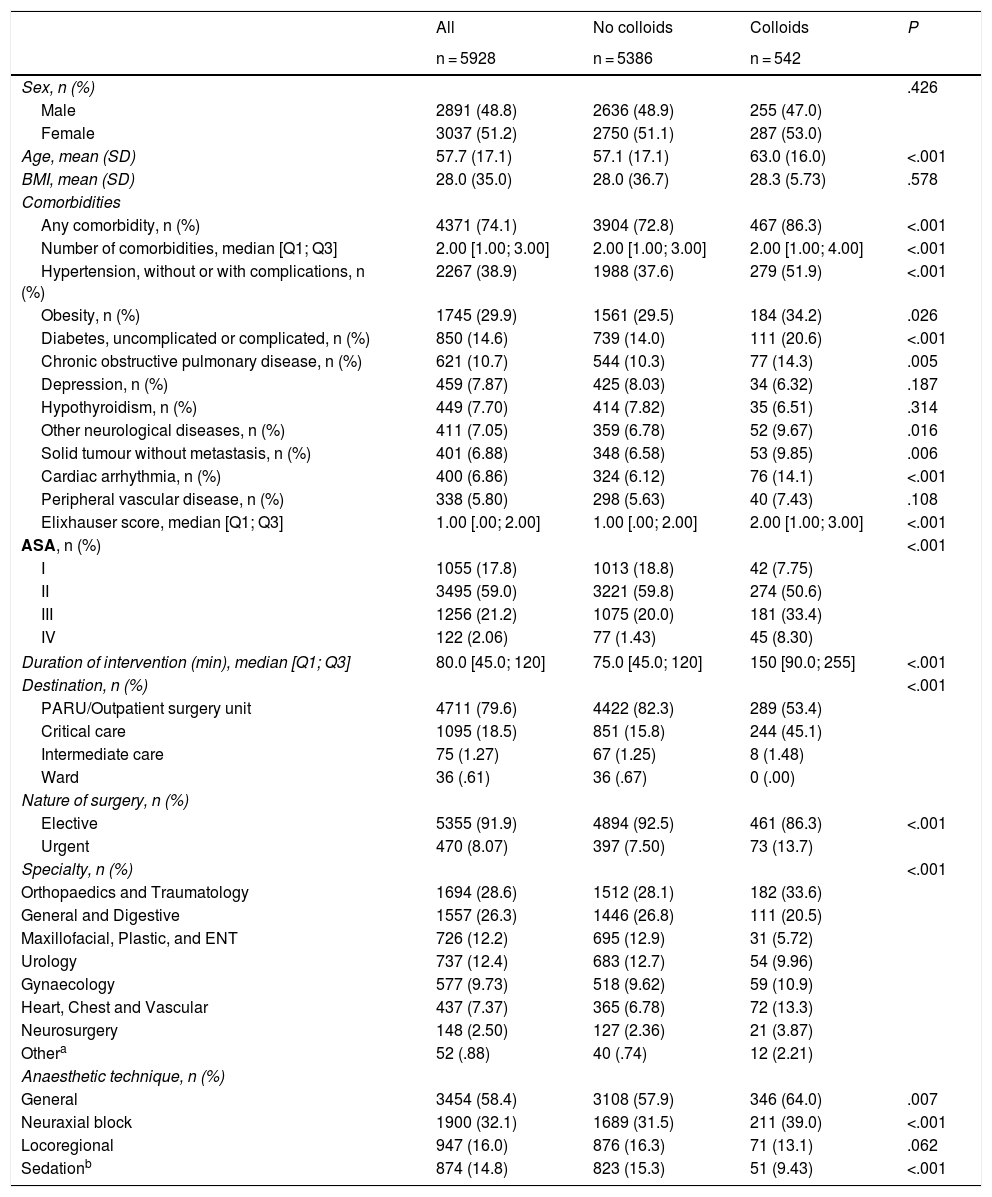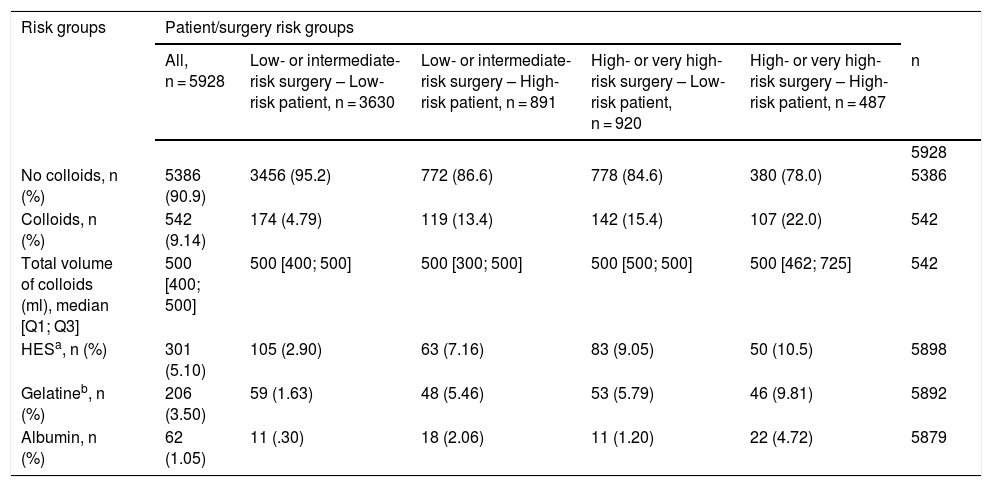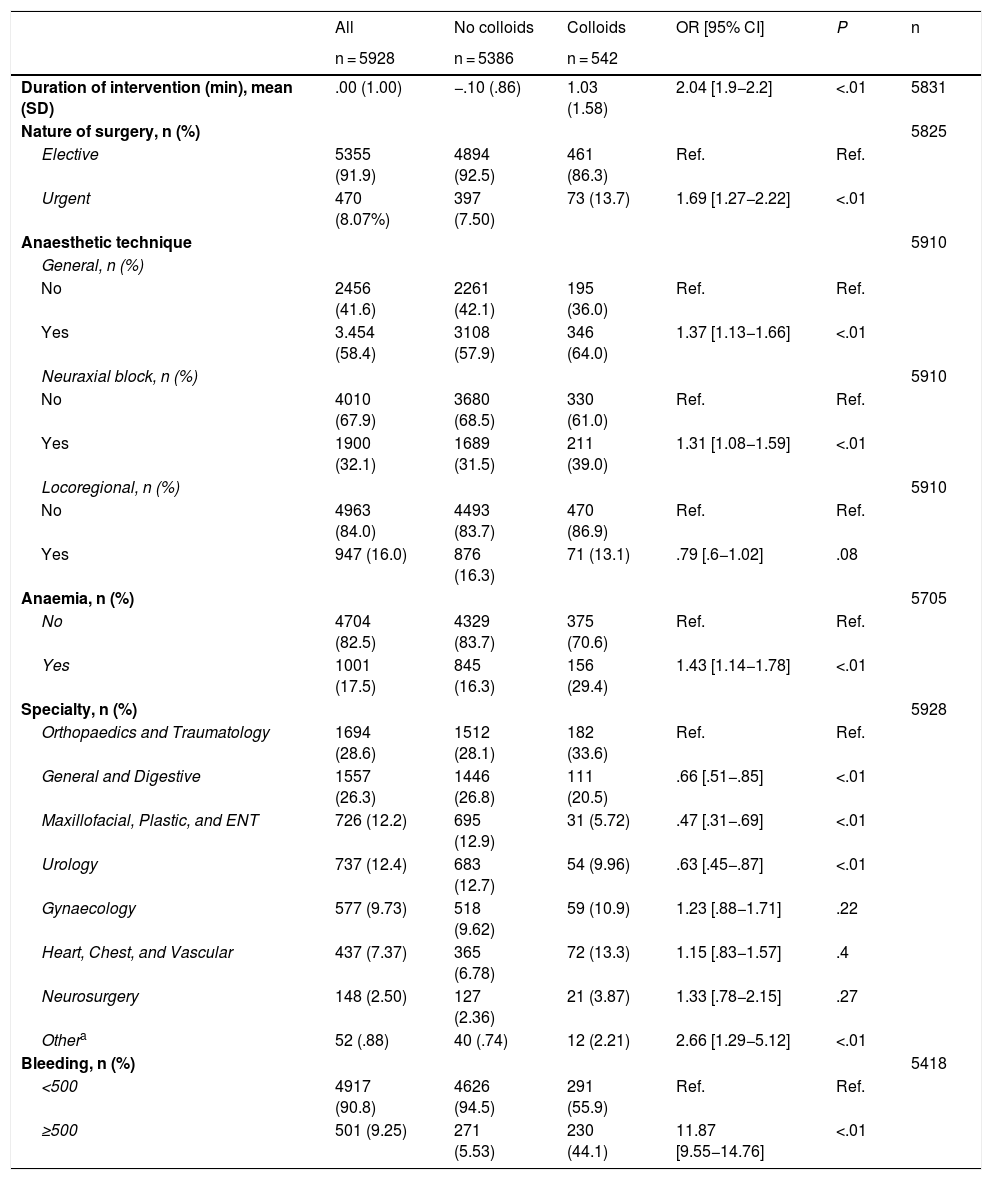Fluid administration is the cornerstone in hypovolemic patient’s reanimation. Clinical guidelines restrict colloid administration favouring crystalloids. Currently, we don’t know exactly which is the daily clinical practice during the perioperative period. The objective of this study is to describe perioperative use of colloids analysing possible reasons aiming to use them.
Material and methodsProspective, cross-section, national, multicentre observational study. Fluid Day sub-study. We enrolled all patient’s older than 18 years old who underwent surgery during the 24 h of the 2-days study (February, 2019, 18th and 20th). We registered demographic data, comorbidities, anaesthetic and surgical procedure data, fluids administered, perioperative bleeding and monitoring type used during the perioperative period.
ResultsA total of 5928 cases were analysed and 542 patients (9.1%) received any type of colloids, being hydroxiethyl-starch the most frequently used (5.1%). Patients receiving colloids suffered more longing surgery (150 [90–255] vs. 75 [45–120] min), were urgently operated (13.7 vs. 7.5%) and were more frequent classified as high risk (22 vs. 4.8%). Their recovery was mostly in critical care units (45.1 vs.15.8%). Patients with bleeding less than 500 ml received colloids in a percentage of 5.9 versus 45.9% when this figure was overcome. Patients who received colloids were anaemic more frequently: 29.4 vs. 16.3%. Colloids administration had a higher risk for transfusion (OR 15.7). Advanced monitoring also increased the risk for receiving colloids (OR 9.43).
ConclusionsIn our environment with routine clinical practice, colloids administration is limited and close linked to perioperative bleeding.
La administración intravenosa de fluidos constituye un elemento fundamental en la reanimación de pacientes con hipovolemia. Las guías clínicas restringen el uso de coloides en favor de los cristaloides. Actualmente, no conocemos con exactitud cuál es la práctica clínica habitual al respecto durante el periodo perioperatorio. El objetivo del presente estudio es describir el uso perioperatorio de coloides y analizar las posibles causas que motivan su utilización.
Material y métodosEstudio observacional, transversal, multicéntrico. Subanálisis del estudio Fluid Day. Se incluyeron todos los pacientes mayores de 18 años sometidos a cirugía durante las 24 h de los 2 días del estudio (18 y 20 de febrero de 2019). Se registraron datos demográficos, comorbilidades, datos referentes al acto anestésico y el procedimiento quirúrgico, fluidos administrados, sangrado perioperatorio y tipo de monitorización utilizado durante el periodo perioperatorio.
ResultadosSe analizaron 5.928 casos. Un total de 542 pacientes (9,1%) recibieron algún tipo de coloides, siendo el hidroxietilalmidón el más utilizado (5,1%). Los pacientes que recibieron coloides tuvieron intervenciones más prolongadas (150 [90–255] vs. 75 [45–120] min), fueron intervenidos de urgencia (13,7 vs. 7,5%) y se clasificaron como de alto riesgo (22 vs. 4,8%) más frecuentemente. Su recuperación inmediata mayoritariamente transcurrió en unidades de críticos (45,1 vs.15,8%). Los pacientes que presentaron una hemorragia menor de 500 ml recibieron coloides en un 5,9% frente al 45,9% cuando se superó esta cifra. Los pacientes que recibieron coloides presentaban anemia más frecuentemente: 29,4 vs. 16,3%. La administración de coloides supuso un mayor riesgo de transfusión (OR 15,7). La monitorización avanzada también aumentó la probabilidad de administrar coloides (OR 9,43).
ConclusionesEn nuestro medio y en condiciones de práctica clínica habitual, la utilización de los coloides es escasa y estrechamente relacionada con el sangrado perioperatorio.












